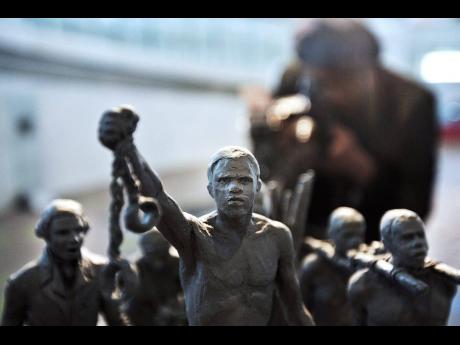Editorial | Deepened case for reparations
Viewers of BBC News may be familiar with Laura Trevelyan, one of its correspondents in Washington.
She is a scion of an English aristocratic family who owned 1,004 slaves on six sugar plantations in Grenada, for whom they were compensated at the abolition of slavery. Last month, scores of family members agreed to apologise for the actions of their forefathers. Near the end of February, Ms Trevelyan will travel to Grenada, where, in tandem with Sir Hilary Beckles, chairman of the Caribbean Community’s Reparation Commission, she will launch a £100,000 fund, donated by the journalist.
Descendants of slave owners, who, like the Trevelyans, acknowledge that crimes against humanity were committed against the Africans transported to the Americas, bolster the argument of Caribbean governments for reparations from European slave nations. But, with respect to Jamaica, an even more compelling case for restitution has been made by the distinguished sociologist and academic Professor Orlando Patterson, who last week cast the 183 years of slavery in the island as a period of genocide that cost over 5.7 million lives.
To put that number into context, it is approximately the same as the six million Jews who were killed in the Holocaust, except that the Jewish experience at the hands of Hitler was compressed over a dozen years.
More recently, Professor Patterson, a Harvard University academic, has been prominent in Jamaica for the report of the commission that bears his name on the reform of Jamaica’s education system – which is not removed from the question of slavery and, this newspaper would argue, the case for reparations.
For, as Professor Patterson noted last Friday in his Rex Nettleford Foundation lecture, Jamaica’s crisis of violence, its low levels of trust, and the problems in its education system “are closely linked to the level of violence that existed for 183 years” of slavery.
NOT SUFFICIENT
Against that background, we agree with Professor Patterson’s contention that it is not sufficient – and certainly not persuasive – to say, as many do, that Jamaica and the Caribbean should “move on” from slavery “if we are still living with …(its) consequences”.
Broadly, Professor Patterson arrived at his figure of the genocide of blacks in Jamaica using a range of demographic data, such as the number of Africans who were shipped to the island, the black population at the end of slavery, and an extrapolation of what that population ought to have been if it had been allowed to grow at comparative rates as that of the United States and other countries with slaves.
For example, between 1650 and 1830, just over one million Africans were brought to Jamaica, compared to roughly 388,000 who went to North America – a difference that emphasises the relative economic strengths and importance of the two regions at the period (Jamaica’s white population was multiples wealthier than their American counterparts) and their respective strategies towards slave ownership.
At the abolition of slavery, there were a bit more than a third of a million black people in Jamaica, compared to two million slaves in the United States in 1830. Using regression analysis, starting with the number of slaves brought to the island and data such as the black population growth in other places over the comparative period, Professor Patterson concluded that Jamaica’s immediate post-slavery population should have been over 5.73 million. The difference between that number and the actual black population provides the number for what he referred to as “the protracted genocide”.
VIOLENCE OF SLAVERY
The reason for this depletion – or stunted growth – of Jamaica’s black population, Professor Patterson contends, was the violence of slavery in Jamaica as well as economic analysis slave owners in Jamaica brought to the process. They calculated that it was cheaper to import new slaves rather than to have the existing population breed and grow, thus having to bear the cost of feeding them. Indeed, childbearing would also mean that female slaves would require time off from work during pregnancy, and to give birth. Also, Professor Patterson noted, rape of female slaves soon after arriving in Jamaica left many with venereal diseases that impeded their fertility and childbearing.
Even if Jamaica’s ‘lost’ black population was half, or less than what Professor Patterson calculated, reparatory justice demands a reckoning beyond the important acknowledgement of wrong, and offers of reparations by the Trevelyans and other families and institutions that benefited from this crime against humanity.
The nation states of Europe that established the legal framework for slavery and compensated their citizens for having to forfeit human chattel have not only a moral, but profoundly legal, obligation to compensate the descendants of the victims, who still suffer from this transgression.
In December, Mark Rutte, prime minister of the Netherlands, formally apologised for his country’s involvement in slavery, the most full-throated acknowledgement of the wrong by a European leader on behalf of the state. We insisted then that Mr Rutte must go further by formally engaging the countries where Holland facilitated slavery by negotiating the quantum of compensation demanded by reparatory justice. He should also press to have the matter placed on the agenda of the European Council, to be resolved by Europe’s leaders.
Indeed, we recommend to Mr Rutte and his European counterparts Professor Patterson’s analysis of the dimensions of the genocide of slavery.

